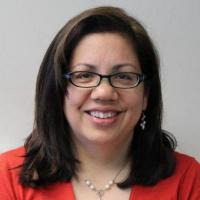SystemX Affiliates: login to view related content.

*To receive email announcements and live stream information for upcoming seminars, please subscribe to the SystemX Seminar/EE310 Mailing list here.
The Astrobee robots began operations on the International Space Station (ISS) in April of 2019. These 32-cm-wide, 9-kg, cube-shaped free flyers are capable of autonomously traversing the US Orbital Segment of ISS and performing tasks to assist astronauts in their day-to-day activities. The Astrobee Facility also provides an on-orbit testbed for guest scientists desiring to try new technologies in zero-g. This presentation will provide an overview of the Astrobee system and some of its key enabling technologies, including propulsion, navigation, and human interfaces. Additional information and publications can be found on the Astrobee website: https://www.nasa.gov/astrobee.
Maria Bualat became the Group Lead of the Intelligent Robotics Group in 2019, after having served as its deputy since 2005. She joined NASA Ames Research Center in 1987, working in the robotics field since 1995. Ms. Bualat has managed projects for NASA’s Science Mission Directorate, Exploration Systems Mission Directorate, Office of the Chief Technologist, and Space Technology Mission Directorate including: ARC Rover Testbed, MIDP instrument integrations and demonstrations on the K9 and K10 planetary rovers, Human-Robot Site Survey, Surface Telerobotics, and Astrobee. Her professional interests include visual navigation, user interfaces, and field testing of mobile robots. Ms. Bualat received her Bachelor of Science degree in Electrical Engineering from Stanford University in 1987, and her Master of Science degree in Electrical Engineering, emphasis Controls, from Santa Clara University in 1992.


